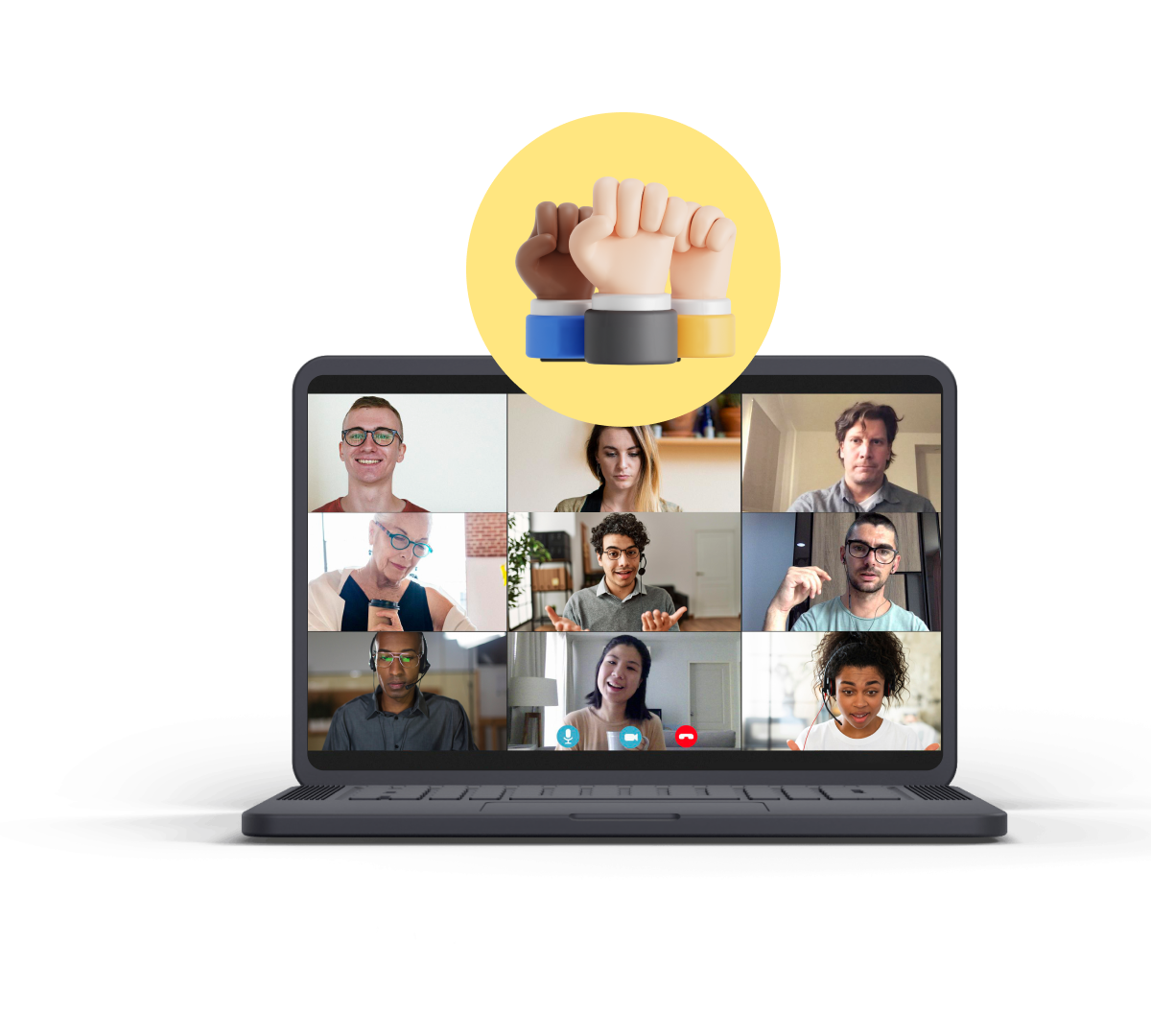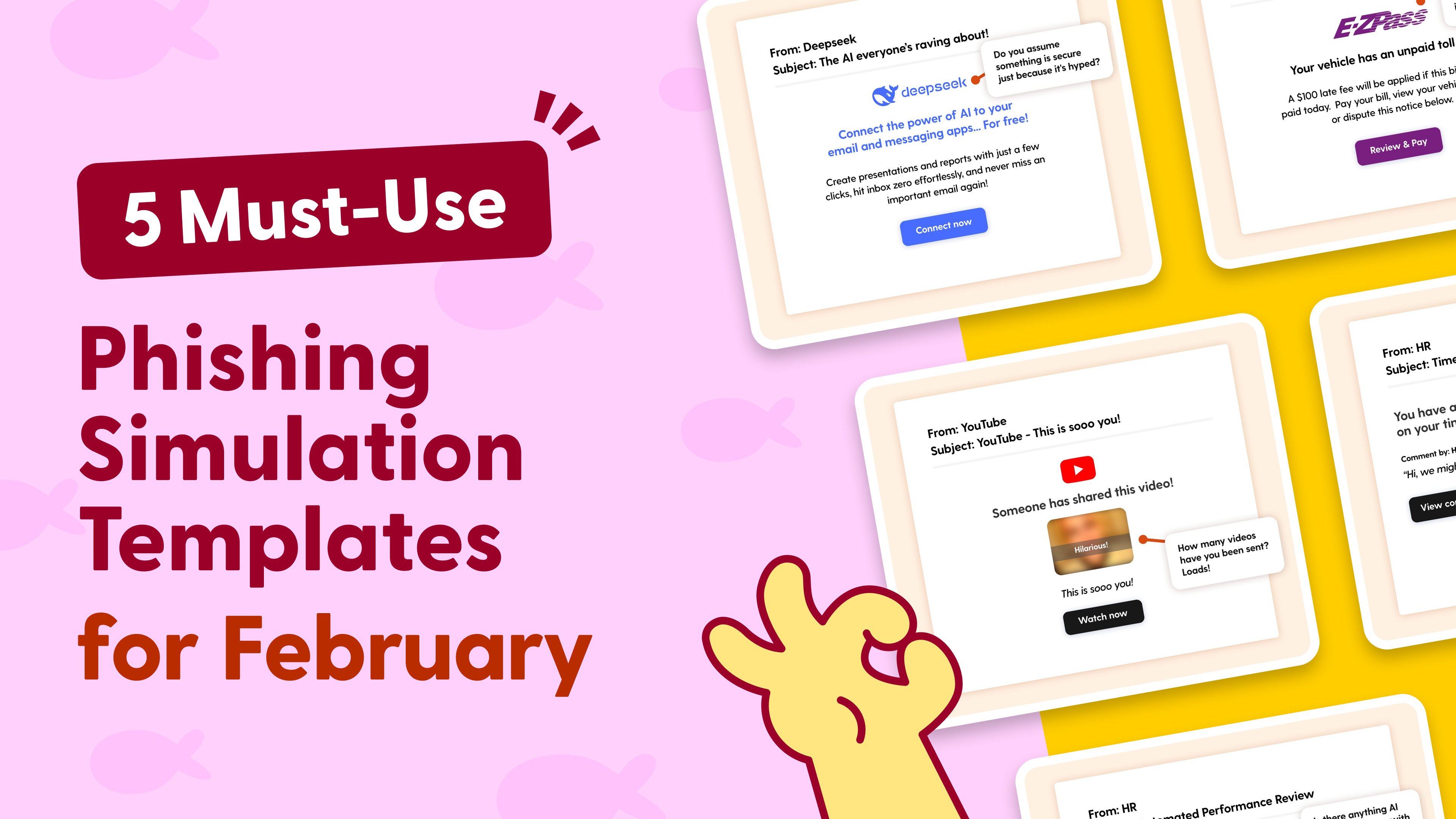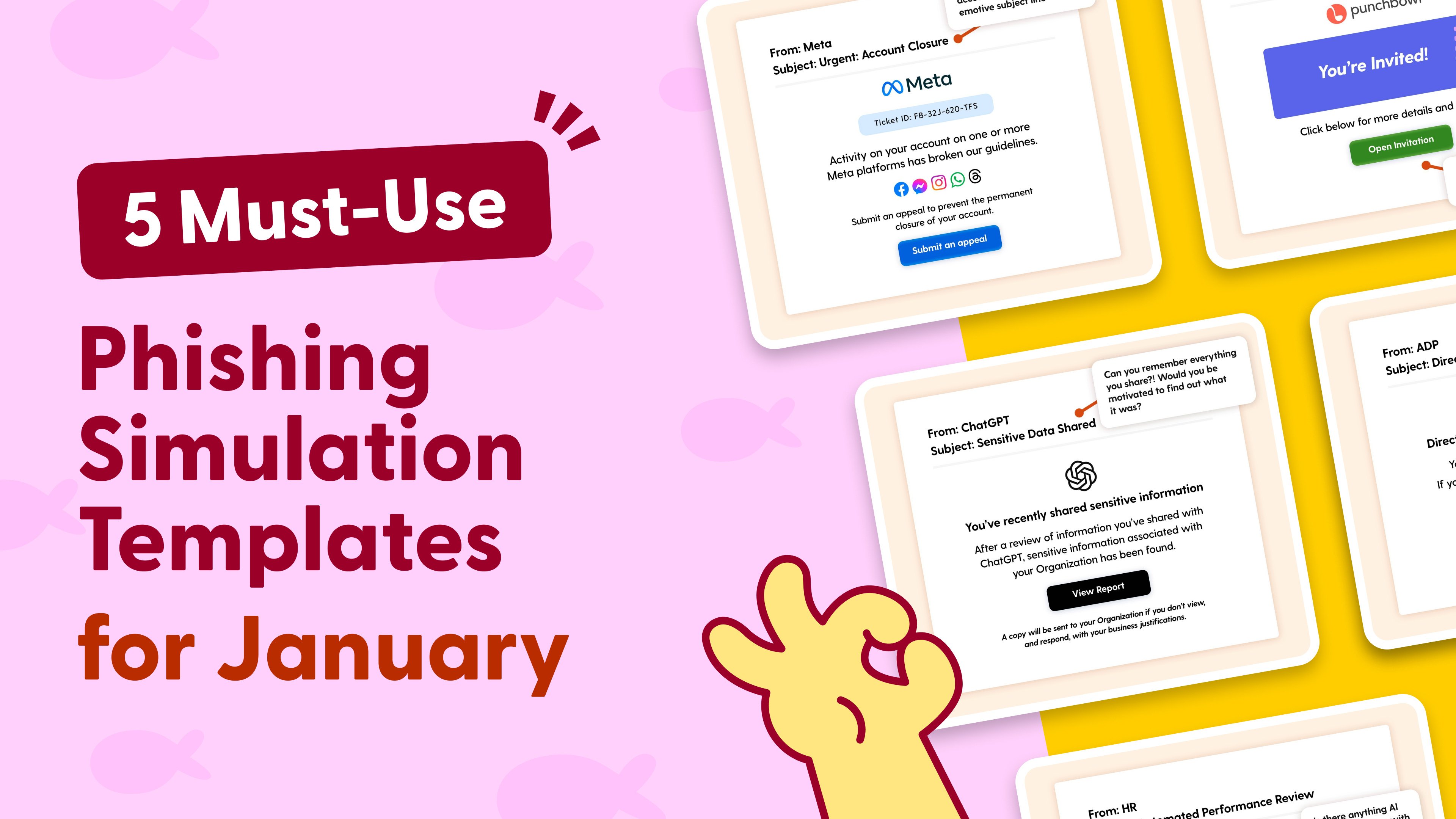5 Fresh Phishing Simulation Templates to Keep Your Team Sharp This August
August brings the back-to-work energy as summer winds down, but cybercriminals never take a vacation. This month, we're introducing five completely fresh phishing simulation templates that exploit different psychological triggers, from social media anxiety to financial urgency to workplace conflicts. These scenarios are designed to test your team's vigilance across platforms they use daily, both personally and professionally.
Download these phishing templates for your in-person security awareness training materials!
Account Alert

Scenario: Employees receive an email claiming their Instagram account has been reported for suspicious activity and may be suspended unless they verify their identity immediately.
The Hook: Social media accounts aren't just personal anymore. They're often tied to professional networking and company presence. The fear of losing access to an account you've built over years, combined with the vague threat of "suspicious activity," creates immediate panic. The email doesn't specify what the suspicious activity was, leaving recipients to wonder if their account was hacked or if they accidentally violated community guidelines.
Real-World Risk: Clicking the "Verify Account" button leads to a convincing fake Instagram login page designed to steal credentials. Once attackers have access, they can use the account for further social engineering attacks on the victim's contacts or lock them out entirely.
Learning Moment: Teach employees that legitimate security alerts from social media platforms typically appear as notifications within the app itself, not just via email. The safest approach is to log into Instagram directly through the official app or website to check account status, rather than clicking email links.
Package Drop

Scenario: An email from DHL informs recipients that their package has been successfully delivered, with a link to "See where your package was left" for security purposes.
The Hook: Even if you weren't expecting a package, the curiosity is irresistible. Was it a surprise gift? A forgotten order? Did someone use your address by mistake? The promise of seeing exactly where the package was left taps into our natural desire to solve mysteries and our concern about package security, especially with the rise in package theft.
Real-World Risk: The "tracking" link leads to a malicious website that could install malware or prompt users to enter personal information to "claim" the package. Some variants ask for delivery fees or request credit card information for "redelivery."
Learning Moment: Remind employees that if they weren't expecting a package, they should verify with family members or check their order history before clicking any links. Legitimate delivery notifications can always be verified by going directly to the carrier's official tracking website.
Payment Panic

Scenario: An urgent email from Expensify warns that the recipient's payment details have expired and their pending expense reimbursements will be delayed unless they update their information immediately.
The Hook: Nobody wants their expense reimbursements delayed, especially when they've fronted money for business purposes. This creates a perfect storm of financial pressure and professional obligation. The email might reference specific amounts or recent expense reports to add authenticity and urgency.
Real-World Risk: The "Update Payment Details" link redirects to a phishing site that harvests banking information, login credentials, or other sensitive financial data. This information can then be used for identity theft or financial fraud.
Learning Moment: Emphasize that financial service providers rarely send urgent emails requiring immediate action. Employees should always log into their Expensify account directly through the official website to verify any payment issues, and contact their finance team if they're unsure about the process.
Trial Trap

Scenario: LinkedIn sends an email warning that the recipient's Premium trial is ending today, and they'll be automatically charged unless they click to cancel immediately.
The Hook: This exploits two fears: unwanted charges and lost opportunity. Many people sign up for LinkedIn Premium trials during job searches or networking pushes, then forget about them. The threat of an unexpected charge, combined with the tight deadline, pressures users to act quickly without thinking. Even those who never signed up for a trial might click to "prevent" the charge, just in case.
Real-World Risk: The cancellation link leads to a fake LinkedIn login page designed to steal professional credentials. Access to LinkedIn accounts can be particularly valuable for attackers conducting business email compromise attacks or gathering intelligence for targeted phishing.
Learning Moment: Train employees to manage subscriptions directly through the official service rather than clicking email links. Legitimate subscription services provide multiple notifications before charging, and users can always check their account status by logging in directly.
Scheduling Scramble

Scenario: An email from HR alerts the recipient that too many people from their department have requested time off for the same period, creating a scheduling conflict that needs immediate resolution.
The Hook: This plays on professional responsibility and team dynamics. Nobody wants to be the reason a department is understaffed or to create problems for their colleagues. The email might suggest that the recipient needs to either modify their time-off request or confirm their dates to help HR resolve the scheduling issue. The urgency comes from not wanting to delay team planning or disappoint coworkers.
Real-World Risk: The "Resolve Scheduling Conflict" link leads to a fake HR portal designed to steal login credentials for internal systems. Access to HR systems can provide attackers with employee directories, salary information, and other sensitive corporate data.
Learning Moment: Highlight that HR processes typically involve multiple steps and direct communication, not urgent email requests. Employees should verify any HR-related requests by contacting their HR department directly through known channels, especially when asked to take immediate action regarding policies or scheduling.
Download these phishing templates for your in-person security awareness training materials!
stay Sharp This August
These five simulations represent the evolving nature of phishing attacks. They're becoming more subtle, more personal, and harder to distinguish from legitimate communications. By testing your team with these scenarios, you're building the critical thinking skills they need to pause, verify, and protect both personal and corporate assets.
The most effective phishing simulations don't just test knowledge. They create memorable learning moments that stick. Use these templates to spark conversations about digital safety, verification processes, and the importance of taking that extra moment to think before clicking.
Want to explore more phishing simulations? Browse our blog for additional templates, and stay ahead of cyber threats with our curated training resources.
Ready to level up your organization's cybersecurity? Register for a free trial of Wizer Boost to access our full library of phishing templates and exercises!

- Weekly virtual meetups
- Community live streams
- Free resources & more


James Linton, Guest Writer
As a former email prankster turned social engineering and phishing expert, I'm passionate about helping individuals and businesses stay safer in their inboxes. By sharing practical insights on the ingredients of message based deception, and real-world examples of social engineering and phishing attacks, I aim to give fresh perspectives on how to understand the true nature of these problems.
.png?width=501&height=501&name=Phishing-Example-PDFs-jul%20(1).png)


